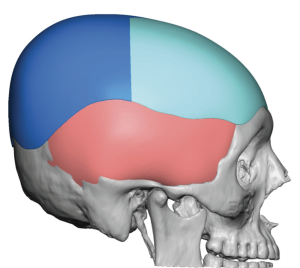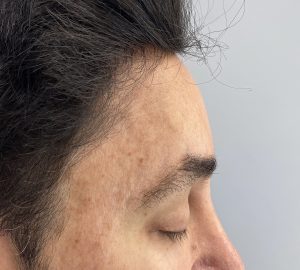Background: The forehead occupies a full third of the upper face and as such has a major role to play in facial aesthetics. Despite its broad surface area coverage it does not have many distinct features that creates its look. Other than the leading edge of the frontal hairline superiorly and the eyebrows inferiorly it relies on its shape to create its appearance. The forehead shape components include projection, slope and width. Men, unlike women, have the additional shape feature of the mounds of the brow bones.
When increasing the projection of the forehead it is not as simple as limiting the augmentation effects just to the forehead…as this will make it stick out unnaturally. Like any other form of skull augmentation natural effects come from spreading out the augmentation to blend into the surrounding skull areas. This means that it must go back onto the top of the skull as well as potentially out past the bony temporal line onto the temporal fascia. (swide of the head) How far it extends out onto these adjoining areas depends on the amount of forehead augmentation and how much slope change is being done. As a general rule the greater the forehead augmentation projection the further out these implant extensions need to be.
Other feature to consider in forehead augmentation is implant size. To keep the scalp incision small the implant can only be so big. But with larger implants comes the need for longer incisions…unless one change is instituted in the implant’s design.
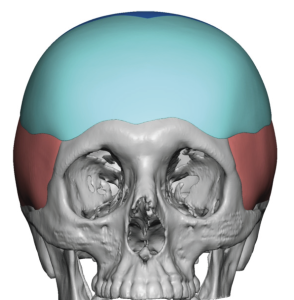

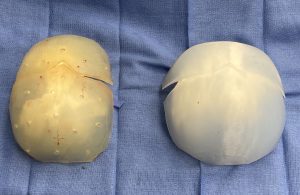
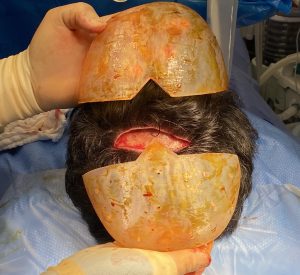
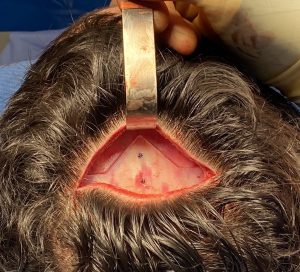
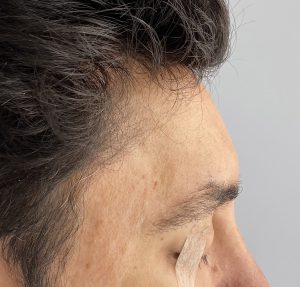
Case Highlights:
1) Forehead augmentation has many dimensional variables to consider to get a pleasing aesthetic result but one of the most important is surface area coverage.
2) In the narrow forehead the augmentation often must extend way back onto the skull and temporal areas to have a natural looking result.
3) To place such larger forehead-skull implants through a small scalp incision a two-piece design is needed.
Dr. Barry Eppley
World-Renowned Plastic Surgeon



